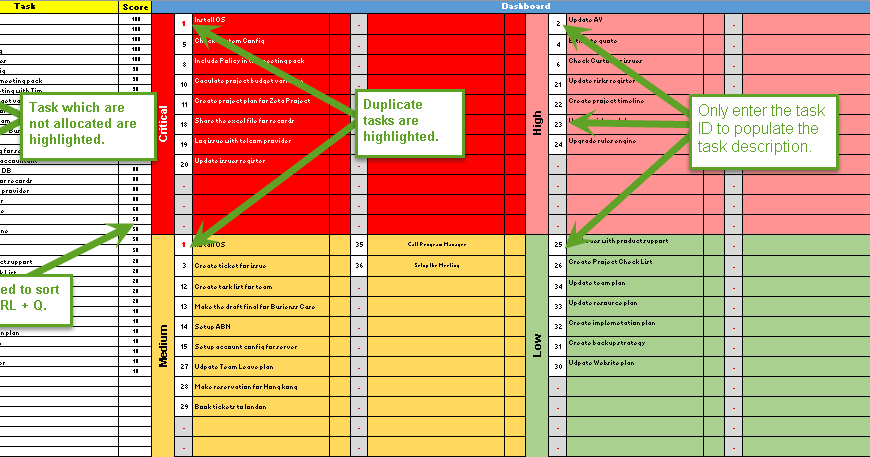
Professionals also frequently delegate these tasks to other professionals who might have more time to dedicate to the lower priority task. This might involve updating company databases or developing a new checklist to help improve future projects or prevent future incidents. These tasks are frequently low priority for an organisation that professionals can complete when they have extra time in their day. Related: What Is a Chain of Command? (Definition and Explanation) Do never tasks This can help all individuals within a company fully understand a project or incident even if they're not directly involved or affected by the event. Some examples of these types of tasks might be submitting expense reports after a project's completion or sending follow-up emails after an incident. This enables a company to allocate its resources effectively. These types of tasks are often important for a company and might not have an urgent timeline. Setting a deadline and creating checkpoints or milestones for these types of tasks can help professionals stay in alignment with task deadlines. This might involve completing important paperwork in conjunction with an incident or contacting contractors for a project. These items are often of high importance and professionals can complete these tasks on a less urgent timeline. Once professionals complete the items in the first section of the matrix, they can continue to the next types of tasks.
#Benefits of priority matrix how to#
Related: Key Project Management Skills and How to Develop Them Do next tasks These tasks often require immediate attention that can help improve the outcome of an incident or project. This might involve creating an outline of your project or contacting appropriate personnel in response to an incident. Professionals complete these types of tasks first, before addressing any other tasks in the matrix. Here are some common ways a simple grid matrix might work in a company: Do now tasks Priority matrices might operate somewhat differently among different organisations or leaders. Related: How to Use a Risk Assessment Matrix How does a priority matrix work?

This prevents professionals from overlooking minor project components that might affect the outcome of the project. This can help improve the quality and outcome of the project because the project manager or other individual addresses each little nuisance of the project. Matrices often analyse different components of a project including:Ī more complex project might utilise a more complex matrix, which can enable professionals to address each part of a project. Professionals often create these matrices in a grid or list format, which can help simplify the use of the matrix. These types of matrices can also help professionals complete simple or complex projects because they often provide guidance and direction to the user.

What is a priority matrix?Ī priority matrix is a set number of procedures and steps an individual can take in response to an event. In this article, we answer what a priority matrix is, explore how it works, list different types of matrices and discuss why this decision-making tool is important for businesses. Learning more about priority matrices can help you discover how to create one to use during your career. Priority matrices can help professionals efficiently make decisions that can benefit their organisation and its customers. Company executives, managers and other professionals make important decisions daily.


 0 kommentar(er)
0 kommentar(er)
